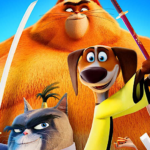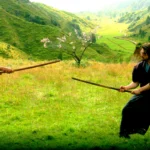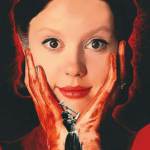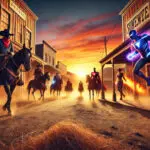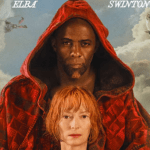Table of Contents
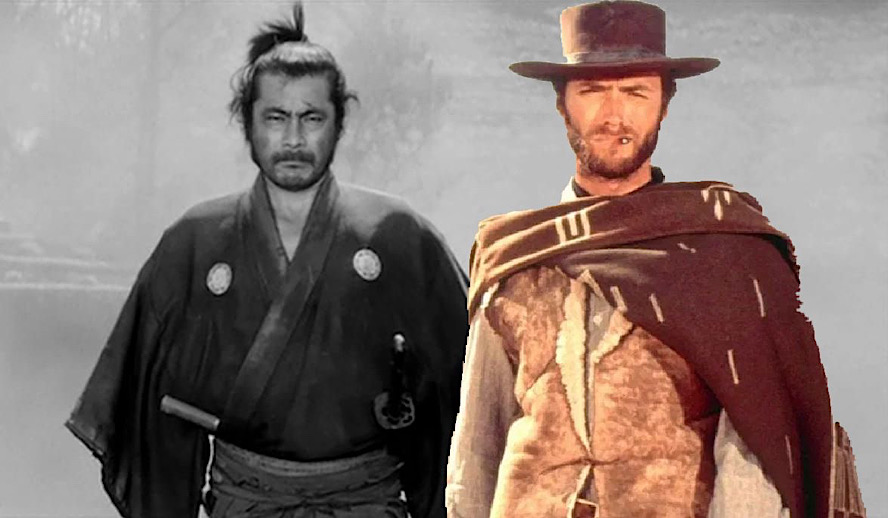
Video Version of this Article
Photo/Video: Cowboys and Samurai/Hollywood Insider YouTube Channel
Cowboys and Samurai shouldn’t have anything in common. Though they did coexist for a brief temporal window, samurai have been around since the 12th century and are far more comparable to the chivalric knights of medieval Europe, being hereditary warriors that supposedly follow a strict moral code–cowboys, on the other hand, are so-called because they tend to cattle. Their adventurous exploits generally involved either skirmishing with the Native Americans or fighting/engaging in banditry, at least according to Westerns.
In addition, our most popular cinematic understanding of samurai refers not to any of their extended histories as warriors, not to their defense of Japan against Mongolian invaders, to their unsuccessful invasion of the Korean peninsula, nor to the Sengoku Jidai which is as culturally significant to the Japanese as Romance of the Three Kingdoms is to the Chinese.
Related article: ‘Throne of Blood’: Akira Kurosawa’s Compelling Shakespeare Adaptation, A Striking Cinematic Experience
Related article: A Tribute to Ennio Morricone – A Legendary Composer & Hollywood Icon
No, the most popular depictions of samurai come either from depictions of ronin, which refers to masterless, wandering samurai, or to samurai of the Edo period, which is basically a world in which samurai and their skills with the blade have been rendered obsolete, not only by national unification and relative peace but also by the prevalence of firearms (though gun-toting samurai were very much a thing).
Cinematically, filmmakers have drawn comparisons between lone, wandering swordsmen and lone, wandering gunslingers–it’s commonly cited that both draw inspiration from knights-errant of old, who were traveling knights unmatched in martial prowess, dedicated to performing good deeds in adherence to their moral code. But is that all there is to it?
A great place to start when discussing this intimate relationship is The Mandalorian, which has instilled a new hope in Star Wars fans and reinvigorated the franchise by returning to its roots–combining ronin and gunslingers.
Subscribe to Hollywood Insider’s YouTube Channel, by clicking here.
‘Star Wars’ – Art Of The Pastiche
Film buffs and Star Wars fans alike know that George Lucas’ original trilogy is a prolific pastiche. Naturally, it borrows heavily from sci-fi, most famously from the Flash Gordon serials of the 1930s to which we can attribute the opening text scroll, wipe transitions, Princess Leia’s earmuff buns, and even the concept of calling each movie an episode, just to name a few examples.
More widely perceived is the influence of Western films. The scene in which Luke returns to his home on Tatooine (a desert planet), only to discover that stormtroopers have murdered his family and burned down his home, is almost a shot-for-shot remake of the scene in John Ford’s The Searchers in which Ethan Edwards (John Wayne) discovers his homestead in flames, his family massacred, and his niece kidnapped by the Comanche.
Han Solo (Harrison Ford) is also a classic gunslinger, again not only in general demeanor but through specific callbacks–the infamous scene in which he shoots Greedo (who did not shoot first) is reminiscent of Angel Eyes’ (Lee Van Cleef) introduction in The Good, the Bad and the Ugly in which he shoots a man with his gun under the table. Even the name Solo evokes the classic image of a lone gunslinger who relies on nothing but the speed of his draw (although he does have a companion).
Related article: The Power of Positivity: Ikorodu Bois + Chris Hemsworth + Russo Brothers + Sam Hargrave
Limited Time Offer – FREE Subscription to Hollywood Insider
Additionally, Boba Fett, the original Mandalorian, was quite directly modeled after Blondie (Clint Eastwood), otherwise known as The Man With No Name, from Sergio Leone’s iconic Dollars Trilogy–his armor and its coloration were meant to evoke Blondie’s iconic poncho. Pedro Pascal, who plays the new Mandalorian, has wittingly or not, also cited The Man With No Name as a major influence on his character.
Star Wars also draws heavily from Japanese period films, known as jidaigeki (jidai–Jedi). Darth Vader’s iconic look, for instance, is a technified suit of samurai armor. Lightsabers are like katanas, and the scene in which Obi-Wan cuts off the arm of a belligerent barfly mirrors a scene from Akira Kurosawa’s Yojimbo.
Speaking of Kurosawa, many know that his film The Hidden Fortress was one of the biggest influences on the original Star Wars. George Lucas has stated that what he was most intrigued by was “that the story was told from the two lowest characters.” In The Hidden Fortress, two peasants find themselves escorting a princess against the backdrop of war–in Star Wars, it’s two droids.
The parallels to various elements of genre films go far deeper than what I’ve listed here, and a lot of it has been corroborated by Lucas himself. His work is comparable to that of Quentin Tarantino in the way that it takes genre conventions and mashes them together to create something new–like a sausage or a chicken nugget.
Related article: Hollywood Insider’s CEO Pritan Ambroase: “The Importance of Venice Film Festival as the Protector of Cinema”
Related article: The Masters of Cinema Archives: Hollywood Insider Pays Tribute to ‘La Vie En Rose’, Exclusive Interview with Director Olivier Dahan
From Western To Samurai And Back Again
The aforementioned Yojimbo and its sequel Sanjuro would be famously ripped off by Sergio Leone to create A Fistful of Dollars and For a Few Dollars More (in regards to the former, Kurosawa wrote to Leone, “I’ve seen your movie. It’s a very good movie. Unfortunately, it’s my movie.”). These, of course, are the first two entries in Sergio Leone’s famous Spaghetti Western Dollars Trilogy, which would conclude with The Good, the Bad and the Ugly.
Some like to point out that Kurosawa was himself influenced by Westerns, which is true. The way in which Yojimbo framed its lone protagonist (Toshiro Mifune) within a wide shot of a dusty nowhere-town is made possible by the cinematic innovations of John Ford, and consequently, it’s said that the Western ripped off the samurai movie which ripped off the Western.
To this, I have two things to say–the first is that Ford didn’t just influence Kurosawa, he influenced everybody, from Ingmar Bergman to Martin Scorsese to Orson Welles, the latter of whom reportedly watched Stagecoach 40 times before creating Citizen Kane. The second is that Kurosawa has stated that the biggest influence on Yojimbo was a film called The Glass Key–a film noir.
I don’t mean to say that The Glass Key or film noir is more significant to Kurosawa’s work than Ford, but there is an interesting comparison to be made. Until the 1950s, film noir and the Western were the two most popular and quintessentially American genres. Film noir had always revolved around telling morally gray stories about crime, which was in contrast with Westerns that usually told tales of morally upright gallantry taking place on the American frontier. Eventually, the distinguishing lines between the genres would become more blurred.
Related article: The Magnificent Seven: A List Of 7 Essential and Amazing Modern Westerns
Related article: How Steven Yeun is Creating a More Authentic, Representation of Asian Americans in Hollywood
Origin Of The Western
Though our modern image of a Western film encompasses the works of Leone, which portray self-serving protagonists where even “the Good” isn’t morally upright, it’s important to remember that “Spaghetti Westerns” were not always highly regarded.
The great critic Roger Ebert himself looked back at his own contemporary review of The Good, the Bad and the Ugly and wrote, “I see I described a four-star movie but only gave it three stars, perhaps because it was a ‘spaghetti Western’ and so could not be art.”
They were considered to be a corruption of the Western genre, but why? Leone himself considered them a parody of the traditional Western by eschewing its righteous morality, focusing instead on greed as its characters’ motivations. However, this was not a new concept among Western films. Gold as a primary motivation, for instance, was done in The Treasure of the Sierra Madre, which also featured distrusting companions who travel together out of necessity.
The Searchers, which has been lambasted in modern times for its outdated portrayal of Native Americans (even by Tarantino), was nonetheless innovative for its time. Its protagonist, Ethan, is clearly fueled by racially motivated vengeance, but that’s exactly the point–Ford was depicting the hateful violence of the frontier born from an irreconcilable prejudice, indirectly criticizing the hitherto standard depiction of the righteous white man taking the frontier from the natives.
Related article: FACT-CHECKED Series: 32 Facts on Hollywood Legend Quentin Tarantino
Related article: Golden Globes 2021: All the Joyful Winners, Exciting Details and Emotional Speeches | Read the Whole Story
It’s also important to remember how short our history really is. The time frame between The Searchers and the era that the film depicts (post-Civil War) is about 90 years, which will be the same time frame between our present-day and World War II in just 10 years. Additionally, when films were just starting to get made, “the West” was still alive and well–The Great Train Robbery (1903), which is often the film that begins the discussion, not only of Western films, but of narrative cinema, came out during the lifetimes of Annie Oakley, Wyatt Earp, Butch Cassidy, and the Sundance Kid, the latter of whom would become the subject of another iconic Western.
However, the actual first Western film that we know of came even before The Great Train Robbery, a short called Kidnapping by Indians (1899) made by Mitchell and Kenyon in Blackburn, England. Its plot is that a group of Native Americans kidnap a young girl, who’s rescued in a gunfight. Sound familiar?
Art Imitates Art – Cowboys and Samurai
The reality is that we label groups of films as belonging to a certain genre for ease of discussion, and maybe they have some things in common–with the Western, it’s mostly the place and time. Peruse through a variety of Western films, however, and you’ll find exactly that–variety. Some of the things we recognize as iconic markers of certain genres were really just techniques or inventions of singular directors or works, and in this way the scope of their usage is really quite narrow–by attributing them to a genre, however, they become something greater.
Related article: How Hollywood Has Perpetuated Anti-Asian Racism, The Complicated History
Related article: Martin Scorsese: 32 Facts on the Powerful Auteur of Cinema Synonymous with Hollywood
Modern works that call back to these genres will therefore focus on the elements that are most recognizable–the Mexican standoff, for instance, is an exemplar of the Western film. However, despite conceptually being older than cinema itself, it wasn’t actually a feature of Westerns until The Good, the Bad and the Ugly, which was supposed to be a parody of an already-storied genre.
Genre, as an invention of artists, is an old concept. Miguel de Cervantes called it out in 1605 when he wrote Don Quixote, referencing the invented image of a knight-errant and the genre of chivalric romance. Long before that in the 2nd century AD, Assyrian novelist Lucian of Samosata parodied the travel genre which included the Odyssey by Homer and Indica by Ctesias by writing A True Story, which poked fun at the fact that neither Homer nor Ctesias had any idea about the places which they described.
Kurosawa borrowed from Western techniques because they served a certain cinematic purpose, but in the age of film, a technique is indelibly linked to a genre. Could you make a film with wide shots of a desert or plains without evoking Western cinema, or use stark chiaroscuro without evoking film noir? If Kurosawa had decided to write a story about a ronin investigating a murky crime amidst political corruption, would our popular perception of samurai be completely different today?
By Daniel Choi
Click here to read Hollywood Insider’s CEO Pritan Ambroase’s love letter to Black Lives Matter, in which he tackles more than just police reform, press freedom and more – click here.
An excerpt from the love letter: Hollywood Insider’s CEO/editor-in-chief Pritan Ambroase affirms, “Hollywood Insider fully supports the much-needed Black Lives Matter movement. We are actively, physically and digitally a part of this global movement. We will continue reporting on this major issue of police brutality and legal murders of Black people to hold the system accountable. We will continue reporting on this major issue with kindness and respect to all Black people, as each and every one of them are seen and heard. Just a reminder, that the Black Lives Matter movement is about more than just police brutality and extends into banking, housing, education, medical, infrastructure, etc. We have the space and time for all your stories. We believe in peaceful/non-violent protests and I would like to request the rest of media to focus on 95% of the protests that are peaceful and working effectively with positive changes happening daily. Media has a responsibility to better the world and Hollywood Insider will continue to do so.”
More Interesting Stories From Hollywood Insider
– Want GUARANTEED SUCCESS? Remove these ten words from your vocabulary| Transform your life INSTANTLY
– Compilation: All James Bond 007 Opening Sequences From 1962 Sean Connery to Daniel Craig
– Do you know the hidden messages in ‘Call Me By Your Name’? Find out behind the scenes facts in the full commentary and In-depth analysis of the cinematic masterpiece
– A Tribute To The Academy Awards: All Best Actor/Actress Speeches From The Beginning Of Oscars 1929-2019 | From Rami Malek, Leonardo DiCaprio To Denzel Washington, Halle Berry & Beyond | From Olivia Colman, Meryl Streep To Bette Davis & Beyond
– In the 32nd Year Of His Career, Keanu Reeves’ Face Continues To Reign After Launching Movies Earning Over $4.3 Billion In Total – “John Wick”, “Toy Story 4”, “Matrix”, And Many More
cowboys and samurai, cowboys and samurai, cowboys and samurai, cowboys and samurai, cowboys and samurai, cowboys and samurai, cowboys and samurai, cowboys and samurai, cowboys and samurai, cowboys and samurai, cowboys and samurai, cowboys and samurai, cowboys and samurai, cowboys and samurai, cowboys and samurai, cowboys and samurai, cowboys and samurai, cowboys and samurai, cowboys and samurai, cowboys and samurai, cowboys and samurai, , cowboys and samurai, cowboys and samurai, cowboys and samurai, cowboys and samurai, cowboys and samurai, cowboys and samurai, cowboys and samurai, cowboys and samurai

Daniel Choi is a writer who’s currently pursuing a BA in Film & Television from New York University. With a background in amateur film production, Daniel is fascinated by how artists’ cultural backgrounds inform their work, subconsciously or not, and how that work is then perceived by different audiences across time and space. He joined Hollywood Insider to promote its mission statement of substantive entertainment journalism, and hopes to enrich readers’ understandings of cinema through insightful analysis.


